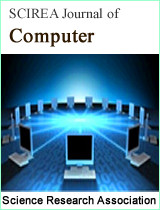Prioritization Decision-making Model for Sustainable Development Goals Based on Multi-factor Simulated Annealing Particle Swarm Algorithm
DOI: 10.54647/computer520400 32 Downloads 49386 Views
Author(s)
Abstract
On September 25, 2015, the United Nations (UN) saw the adoption of 17 Sustainable Development Goals (SDGs) by 193 member states at the United Nations Sustainable Development Summit. The prioritization of the 17 Sustainable Growth Goals will contribute to the quick joint action by the UN to eradicate poverty, protect our planet, and improve the quality of life and futural prospects for all. In view of the challenges related to the 17 SDGs identified by the United Nations, our team has introduced a new model to quantify and assess their development potential. This model determines their priorities based on the established network of sustainable development relationships through a Post-Decision Future Development forecasting approach to analyze the impact of major international movements on the SDGs. This article transforms the statistical data of the United Nations Sustainable Development Goals into a relationship network. It introduces the overall development speed and establishes the AHP-MLR model to determine the comprehensive influence of the SDGs. Additionally, the SA-PSO algorithm optimizes the ARIMA model to predict changes in 17 SDGs in the next decade. The predictive results indicate that SDG16 will boost the overall development speed by 23% in the next ten years, solidifying its status as the most promising direction for the next decade. We assume the successful realization of quality education, rebuild the relationship network and influence, and introduce three preliminary goals through AHP-MLR model analysis. As such, it is concluded that Internet access will be the focal point of the latest development. Finally, we convert the relationship network into a weighted undirected graph and, with SDG9 as the origin, generate a minimum spanning tree (MST). The results show that this assumption facilitates highly efficient development in SDGs (SDG 6, SDG 8, SDG 12) related to resource utilization. The research model presented in this article serves as an effective tool for the UN and other decision-makers to better understand and optimize the implementation of the SDGs, which, in turn, promotes the realization of global sustainable development.
Keywords
relational network; AHP-MLR model; multi-factor simulated annealing particle swarm algorithm; BFGS algorithm; MST model
Cite this paper
Binghui Liang, Junyong Cao, Jiancheng He, Shuyang Li, Xianliang Zhang, Jianhao Ou,
Prioritization Decision-making Model for Sustainable Development Goals Based on Multi-factor Simulated Annealing Particle Swarm Algorithm
, SCIREA Journal of Computer.
Volume 9, Issue 1, February 2024 | PP. 9-36.
10.54647/computer520400
References
| [ 1 ] | Freeman, AMIII (2003). The measurement of environmental values: Theory and methods (2nd ed.). Washington, DC: Resou rces for the Future. |
| [ 2 ] | Lankford, RH (1988). Measuring welfare changes in settings with imposed quantities. Journal of Environmental Economics and Management , 15,45–63. |
| [ 3 ] | Department of Economics and School of Global Environmental Sustainability, Colorado State University, Fort Collins, CO 80523, USA |
| [ 4 ] | Fonseca, LM; Domingues, JP; Dima, AM Mapping the Sustainable Development Goals Relationships. Sustainability 2020, 12, 3359. https://doi.org/10.3390/su12083359 |
| [ 5 ] | Gupta, J., Vegelin, C. Sustainable development goals and inclusive development. Int Environ Agreements 16 , 433–448 (2016). https://doi.org/10.1007/s10784-016-9323-z |
| [ 6 ] | Xiaohui Li, Xiangying Shen, and JP Huang. "Asymmetric and symmetric meta-correlations in financial markets*", Chinese Physics B 25.10 (2016) |
| [ 7 ] | Theerasak Chanwimalueang, and Danilo P. Mandic. "Cosine Similarity Entropy: Self-Correlation-Based Complexity Analysis of Dynamical Systems.", Entropy 19.12 (2017) |
| [ 8 ] | Ildar Batyrshin. "Constructing Time Series Shape Association Measures: Minkowski Distance and Data Standardization", arXiv: Learning abs/1311.1958. (2013): 204-212. |
| [ 9 ] | Alessandro Magnani, and Stephen P. Boyd. "Convex piecewise-linear fitting", Optimization and Engineering 10.1 (2009): 1.0-17.0. |
| [ 10 ] | A. Gnanavelbabu, and P. Arunagiri. "Ranking of MUDA using AHP and Fuzzy AHP algorithm", Materials Today: Proceedings 5.5 (2018): 13406-13412. |
| [ 11 ] | Clerc M. The swarm and the queen: towards a deterministic and adaptive particle swarm optimization[C]//Proceedings of the 1999 congress on evolutionary computation-CEC99 (Cat. No. 99TH8406). IEEE , 1999, 3: 1951-1957 . |
| [ 12 ] | Kaifu Mao,Qingguang Bao and Chi Xu. Particle Swarm Optimization Algorithm Based on Asymmetric Learning Factor Adjustment[J]. Computer engineering , 2010, 36(19): 182-184. |
| [ 13 ] | Qin Li, and Wei Wang. "AVO Inversion in Orthotropic Media Based on SA-PSO", IEEE Transactions on Geoscience and Remote Sensing 59.10 (2021): 8903-8912. |
| [ 14 ] | Neculai Andrei. "An adaptive scaled BFGS method for unconstrained optimization.", Numerical algorithms 77.2 (2018): 413.0-432.0. |
| [ 15 ] | Shlomo Greenberg, and Daniel Kogan. "Linear search applied to global motion estimation", Multimedia Systems 12.6 (2007): 493-504. |
| [ 16 ] | Zhiguo Hong, and Yan Li. Calculation of Higher Order Average Random Consistency Index (RI) in Analytic Hierarchy Process. Computer engineering and application , 38.12 (2002): 45-47. |
| [ 17 ] | Rajesh G. Kavasseri, and Krithika Seetharaman. "Day-ahead wind speed forecasting using f-ARIMA models", Renewable energy 34.5 (2009): 1388-1393. |
| [ 18 ] | Margaret A. Goralski, and Tay Keong Tan. "Artificial intelligence and sustainable development", International Journal of Management Education 18.1 (2020) |

